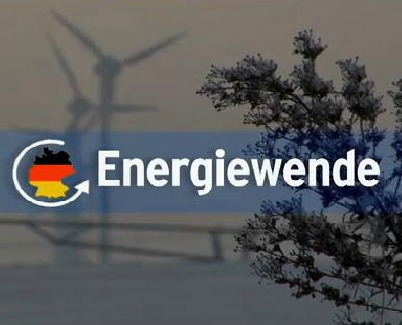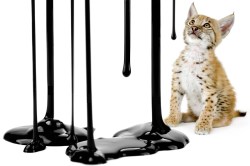Ever wonder about the future of energy? Will it be wind? Solar? Geothermal? No wait, I got it, tar sands! (Let’s try that again — tar sands!) They’ve got everything oil does, but they’re harder to get, crappier when you get them, and leave a much bigger mark on the climate. Sounds like a winner. Let’s look a little closer, shall we?
First off, what are tar sands? Tar sands are deposits of about 90 percent sand or sandstone, water, and clay mixed with only about 10 percent high-sulfur bitumen, a viscous black petroleum sludge rich in hydrocarbons, also known as “natural asphalt.”
The Athabasca reserves, in Alberta, Canada, estimated to hold about 170 billion barrels, are the site of the only commercial tar-sands operation in the world. (Though, spoiler alert, that’s about to change.) It’s one of the largest industrial programs on the planet and could eventually cover an area larger than the state of Florida — and it’s sprouting an enormous oily ganglion known as the Keystone XL pipeline, which, if completed, would pump 1.1 million barrels of bitumen sludge a day, crisscrossing much of the continent’s freshwater supply, all the way to the Gulf of Mexico.
Sound like a complicated way to create oil, gasoline, and diesel? Naw. Ain’t no thing. Just follow these simple instructions:
1. Change the name from tar sands to oil sands. Even though there’s no actual oil in them, you’re already that much closer to that sweet Texas Tea. I mean, tar is the reason we don’t have mastodons. Nobody wants tar. But everybody wants oil — we put it in our cars and on our salads!
2. Clear-cut all that unsightly boreal forest. This, admittedly, can be a bit of a bear — or, more likely, lots of bears, and lynxes, and trees, and anything else that creeps, crawls, grows, or flies, and, in the name of tar sands, will also need to die.
3. Get yourself some massive excavators, the biggest moveable objects on the planet, each capable of gouging out 16,000 cubic meters of earth an hour, and set about ripping pits into the planet 15 stories deep. Use the excavators to fill enormous dump trucks, 22 feet high and nearly 50 feet long, and capable of hauling 400 tons a load — which is good, because we’re far from done, and it takes a lot of sand to make a little oil.
4. To extract the bitumen from the sands, you’ll need to crush the sands with enormous machines creatively known as crushers. Mix the crushed sands with hot water to form a slurry, then agitate the slurry (interestingly, also a major step in most British cooking) so the bitumen sludge can be scooped out. The stuff is still too thick to transport, though, so you’ll need to cut it with solvents so it can be shipped via pipeline for processing.
5. Now you’re ready to get started! Of course you’ve got a problem. Somebody added solvents to our tar, so here comes the hydro-treating that removes the solvents, along with as much nitrogen, sulfur, and other metals as we can get out. The process uses a lot of water and energy in the form of natural gas and oil. (Hey, what are we trying to make again?) Next, heat it again to remove carbon and add hydrogen as part of the upgrading process to make this sludge useful.
6. The bitumen still needs to be refined, so it’s off again into another pipeline to an oil refinery, though most of the old refineries aren’t up to the task of handling the filthy bitumen, so you’ll need to build new refineries or upgrade old ones. Presto! You’re cooking with gas!
After all of this, it takes as much as four tons of sand and four barrels of fresh water to make a barrel of synthetic oil, which is good for about 42 gallons of gas, or one fill up in a ’97 Suburban. The good news is about 10 percent of that water is recycled! (On the downside, the other 90 percent is dumped into toxic tailing ponds, which currently cover about 50 square kilometers [19 square miles] along the Athabasca River, and is leaking into the ecosystem at a rate of perhaps 11 million liters a day.)
Sounds great, huh? That’s probably why the state of Utah has given final approval to open the world’s second commercial tar-sands project. The Alberta operation uses more water than a city of a million people each year. Seems like a perfect fit for Utah. I’m sure the 2 million-plus people in the greater Salt Lake City area will switch to (caffeine-free) Pepsi!
Not everyone seems quite as enthused as Utah, however. The E.U. attempted to single out tar sands as “highly polluting,” and Simon Hughes, the deputy leader of the British Liberal Dems, compared them to land mines, blood diamonds, and cluster bombs. This side of the pond, James Hansen, head of NASA’s Goddard Space Studies Institute, warned that exploiting all of Canada’s tar sands would be the final nail in the climate coffin, and that heading down that road will lead to a global game over.
But what do those guys know? Just follow the steps and making oil out of tar sands is as easy as falling out of bed. And besides, tar sands isn’t game over, it’s a new beginning.




